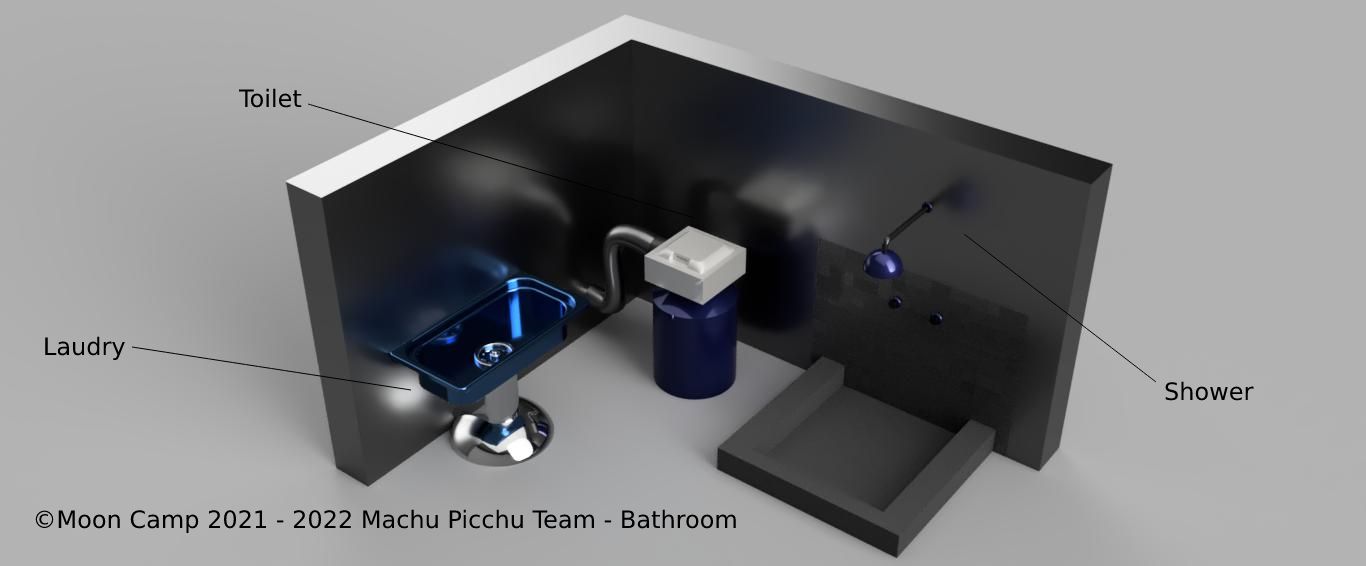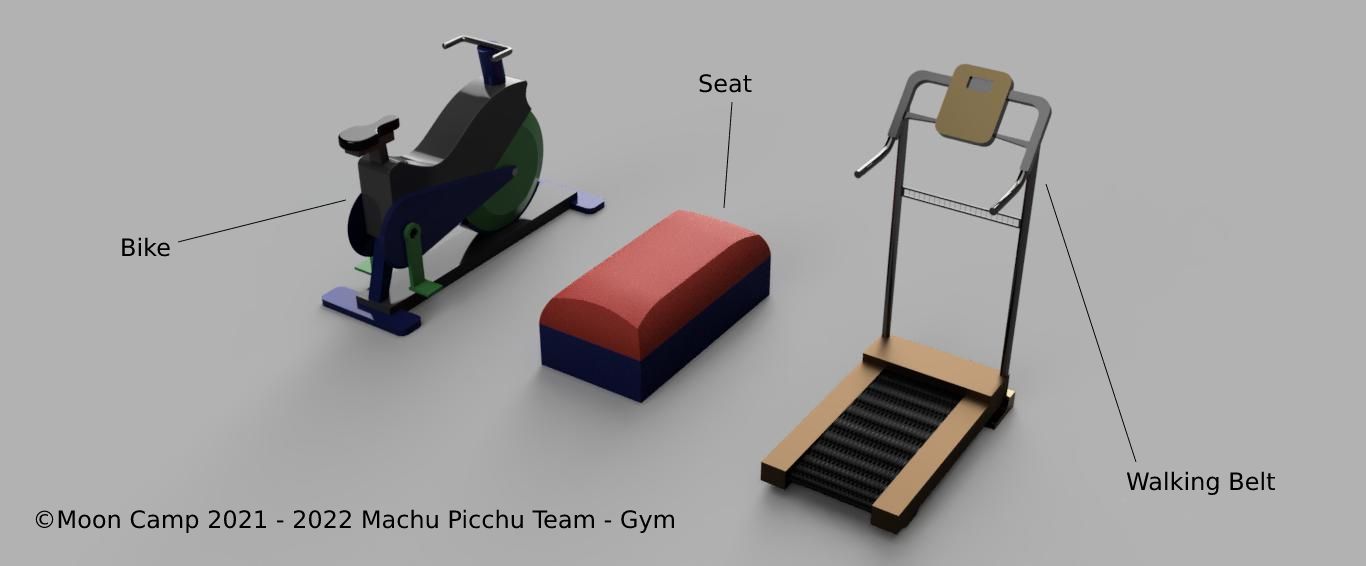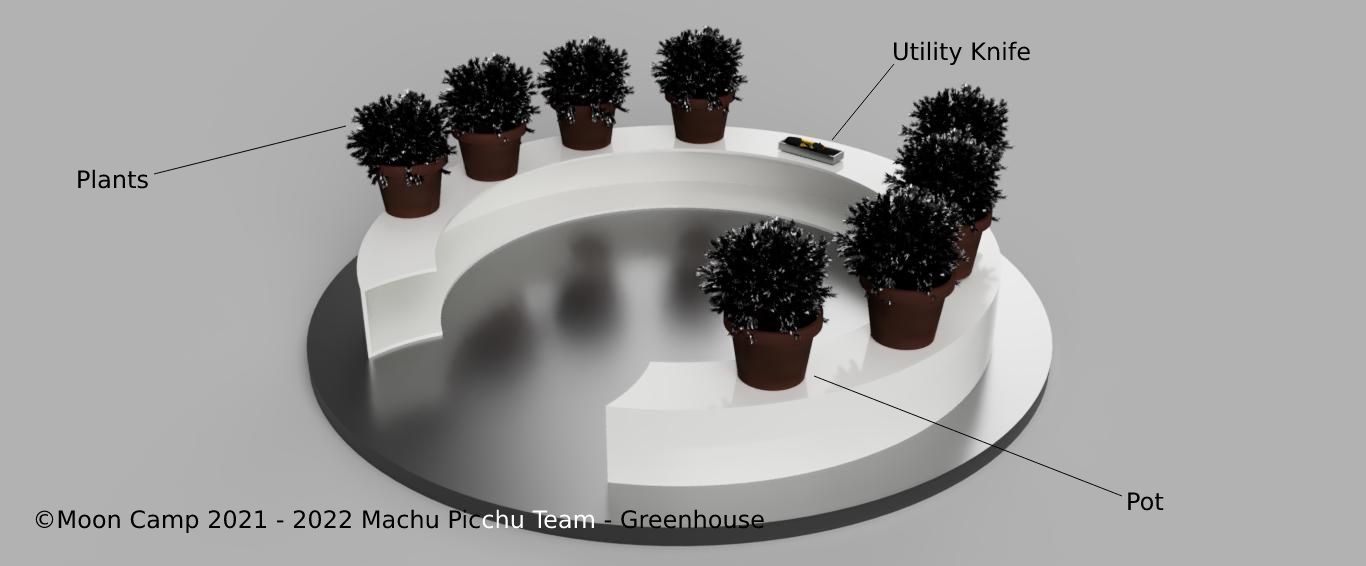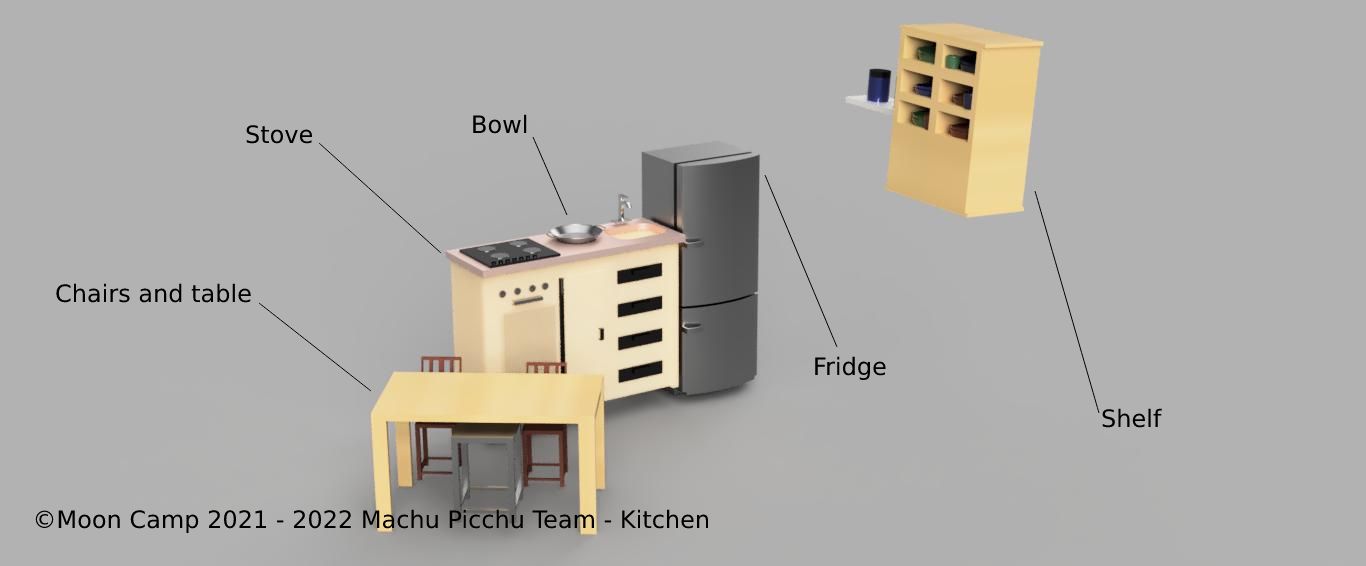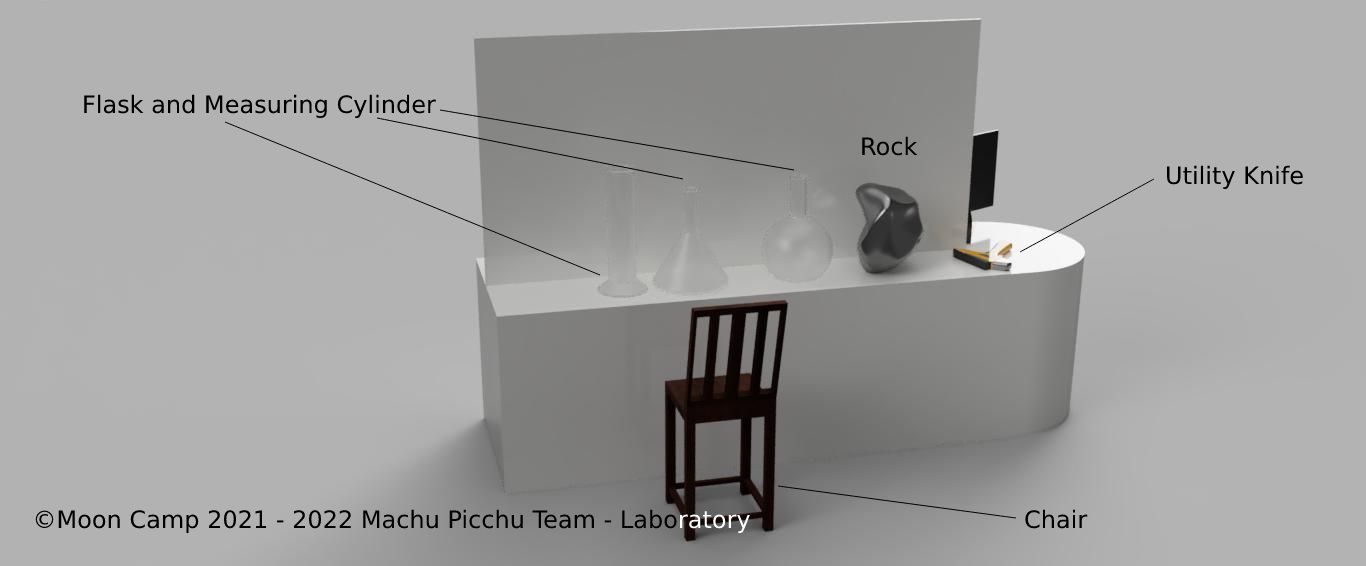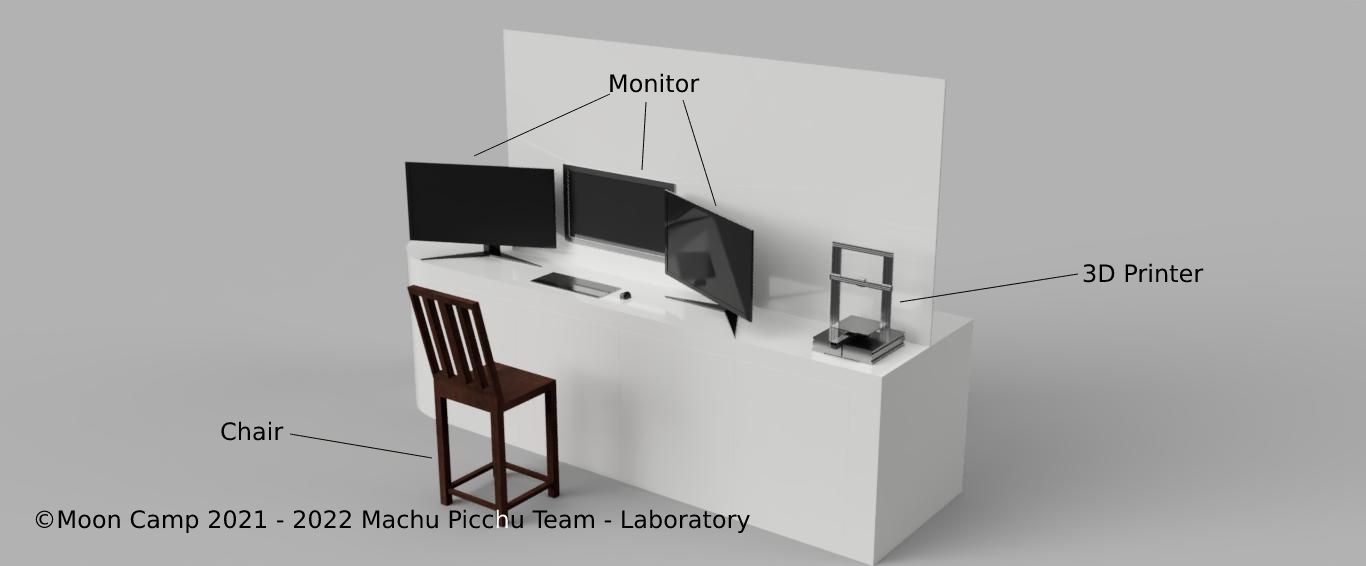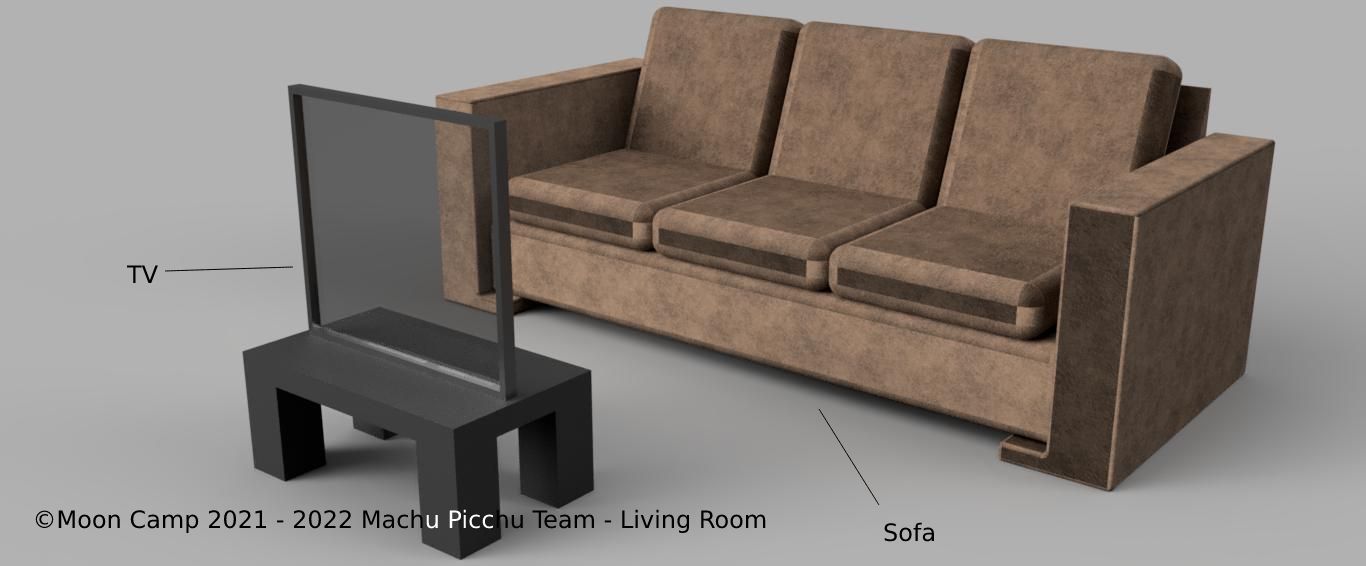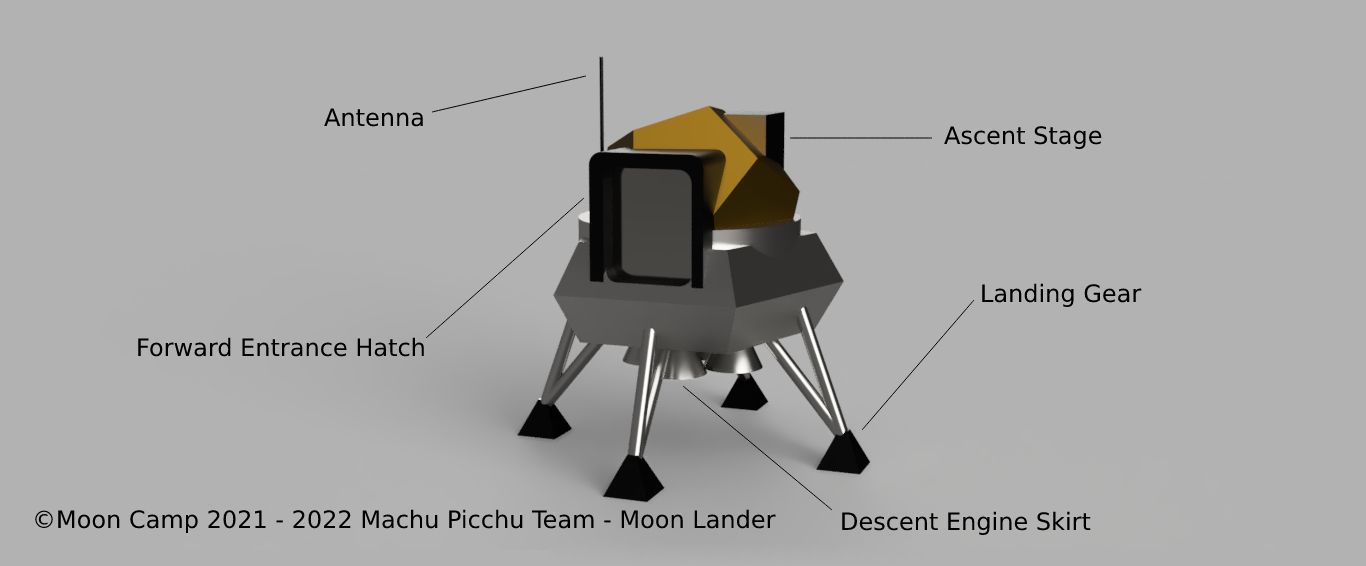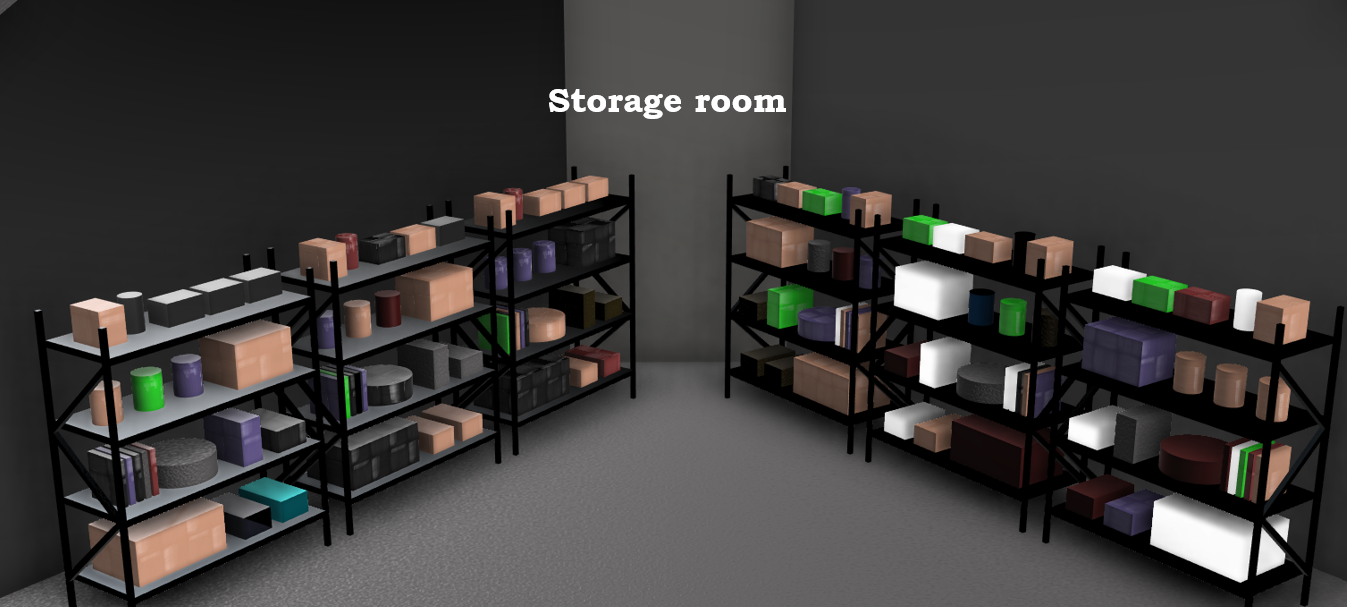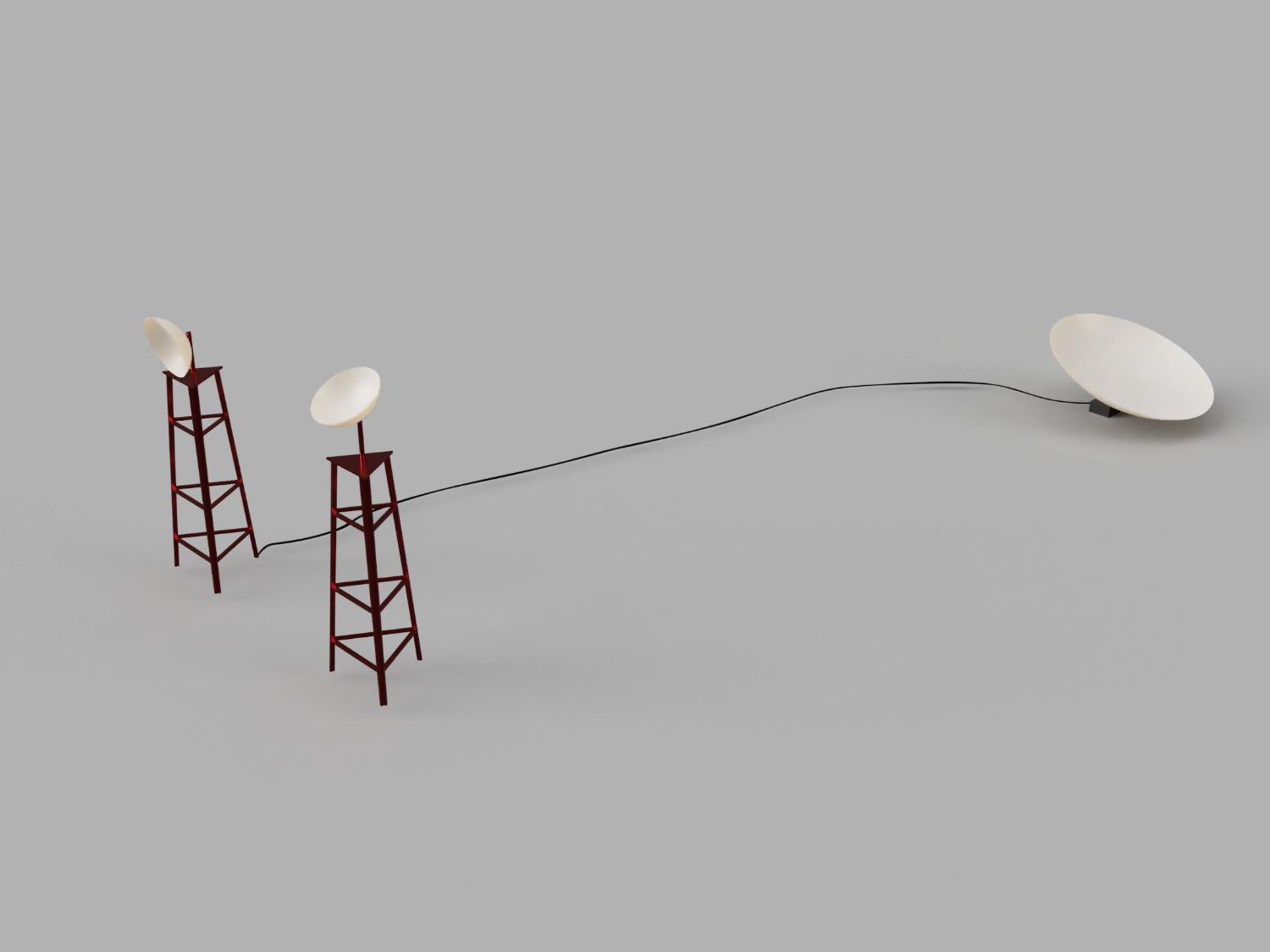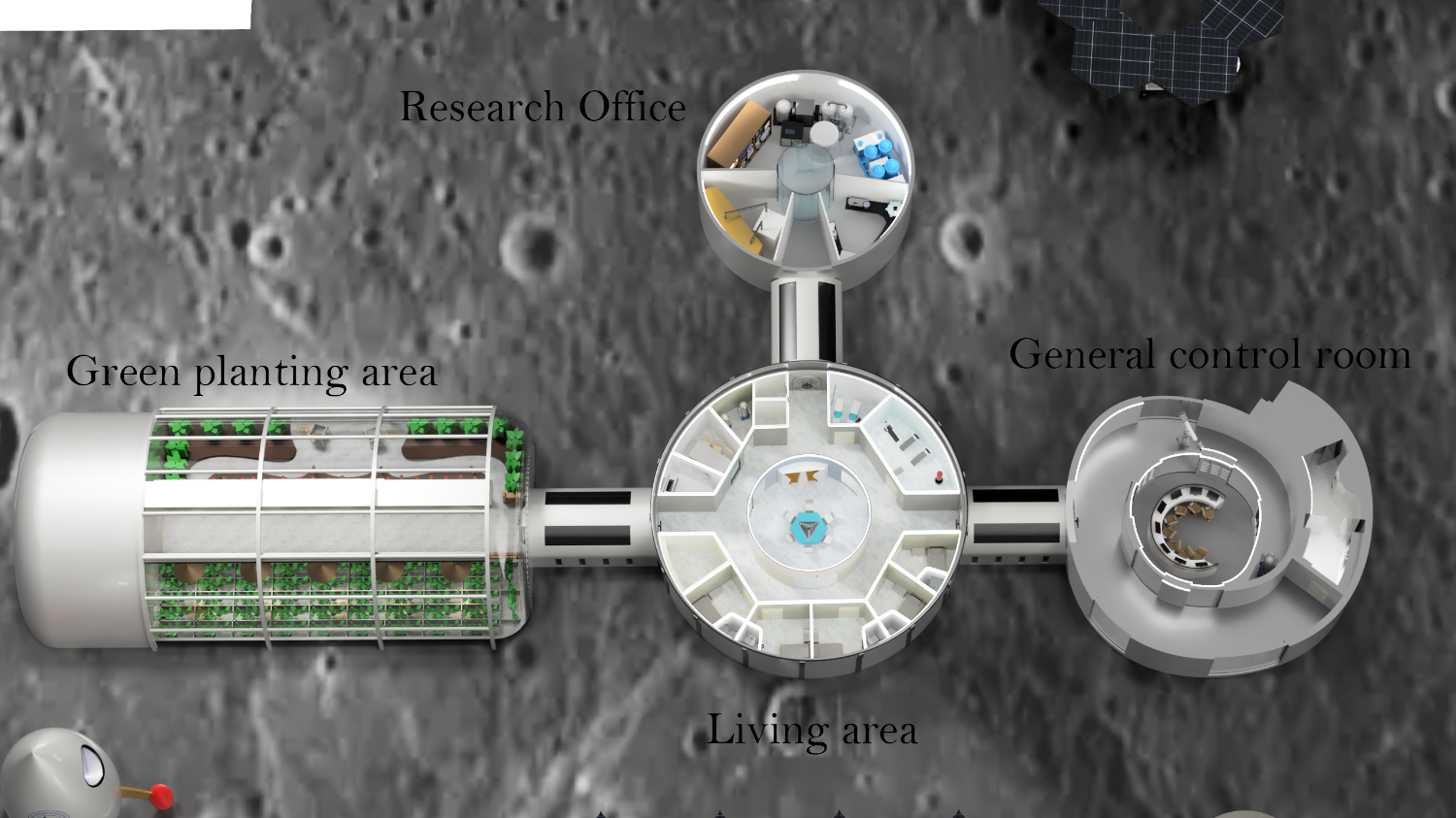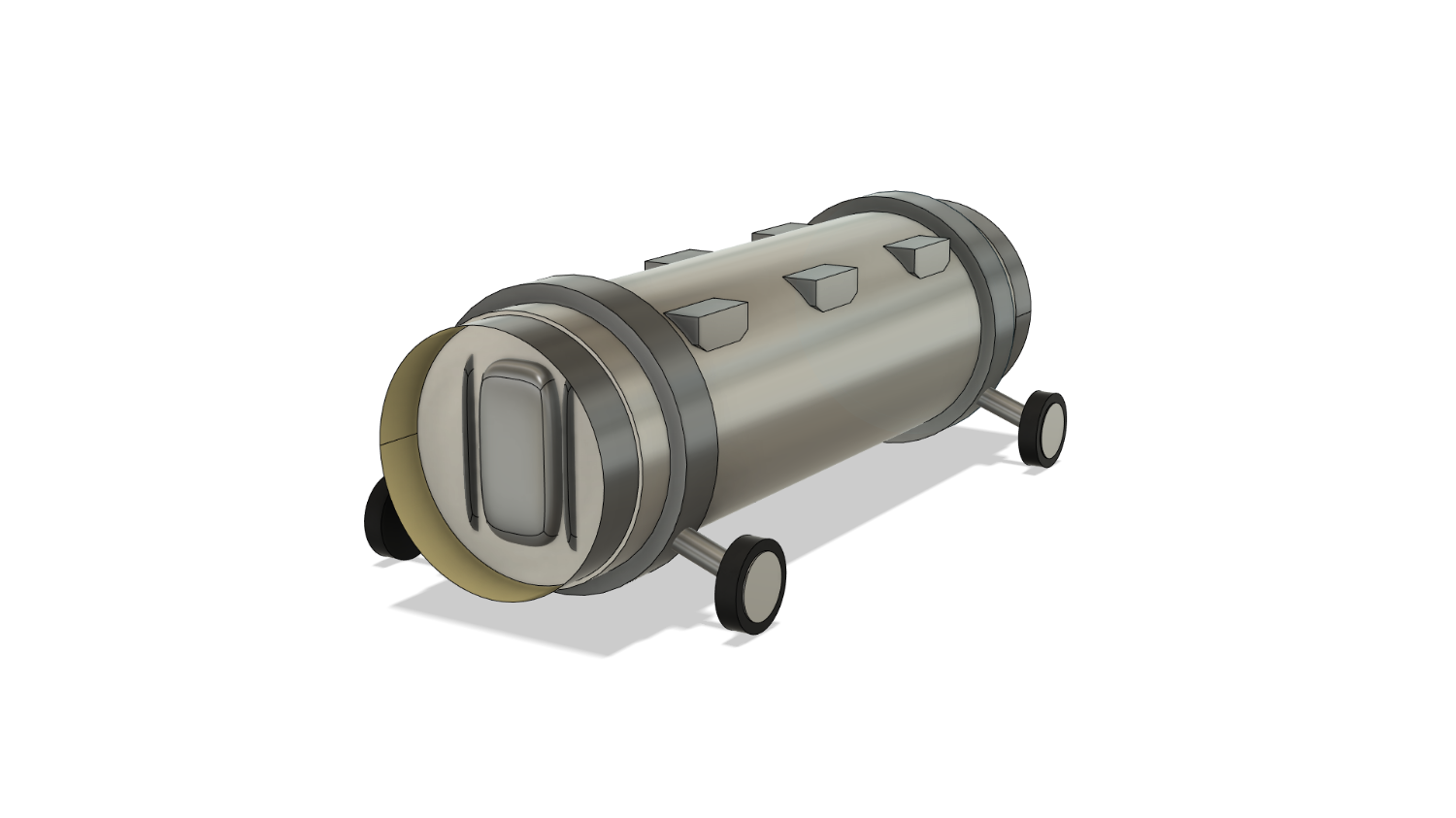Moon Camp Pioneers Gallery 2021-2022
In Moon Camp Pioneers each team’s mission is to 3D design a complete Moon Camp using Fusion 360. They also have to explain how they will use local resources, protect astronauts from the dangerous of space and describe the living and working facilities.
Team: Machu Picchu Team
PAUC Lima Peru 15, 16 3 / 1
External viewer for 3d project
|
Project description
Our project aims to design a base on the moon, which is self-sufficient and can be implemented in the next 5 years, as the first stage of experimentation. On the first few flights, we will carry several weeks’ worth of food to support the two astronauts who will stay and the advance team, which will help build the camp. In addition to small plants with edible fruits, which are grown in an aerial environment (aeroponics) and other plants in an aquatic environment (hydroponics). The camp will be built partly on the surface and partly underground. On the surface, we will build the greenhouses, the rover’s area, the landers area, solar panels, an airtight room with oxygen, which will allow suits and equipment to be entered and removed, and then, through an elevator, we will be able to go to the rooms. located in the basement, within which we have a laboratory, gym, bathroom, bedroom, kitchen, medical emergency area, and a restroom But the special feature of this camp is the development and use of a force field 500 meters in diameter, which will serve to prevent meteorites from damaging equipment located on the surface. There is an invention patented by the Boeing company in 2015, and we believe that by joining forces with ESA, great results could be achieved. This would be a great step in the history of astronautics. |
|||
|
2.1 Where do you want to build your Moon Camp?
We chose to make the camp inside the Slater crater, at the south pole of the moon. This is the most habitable place due to its constant sunlight and temperatures (−50 °C to 0°C), the light will benefit from the use of solar panels: electricity for long periods of time. In that area is the Shackleton Crater, which has frozen water inside, allowing astronauts to investigate and use it for their own consumption. Our greenhouse, lunar rover, lander, laboratory, and airlock will be on the surface, while the lunar base is below the surface to protect astronauts from radiation and meteorites, as well as cold nights. The airlock has an elevator that connects the lunar base to the surface. 2.2 How do you plan to build your Moon Camp? Describe the techniques, materials and your design choices.
Within the techniques that we will use to build the camp, the first is to carry cylindrical elements that can be inflated on the Moon, and serve as the main structure, then small robots will impregnate a solution combined with the lunar regolith, and in this way, we will manufacture a shell that will serve to protect us from the sun’s radiation and gamma radiation. Once the first house, which will serve as a refuge for the astronauts, and the laboratory, installed on the surface, we would carry a giant 3D printer, for the construction of the other components, some of us would build it inside a crater, using as raw material the lunar regolith. As a first option, we would build the camp in Slater Crater, which is close to Shackleton Crater. 2.3 The environment on the Moon is very dangerous for the astronauts. Explain how your Moon Camp will protect them. (maximum 150 words)
To protect our inhabitants, we decided to put a risky idea but interesting: a force field. The plasma field by the electromagnetic arc is produced to attenuate shock waves caused by explosions of near meteor collisions. These phenomena are detected by sensors positioned strategically and active the heating mechanism on certain parts of the shield, allowing protect the asset. Our technology still has not achieved repel direct hits, but we know that soon investigations will be advanced for a possible evolution of the element. The idea that we present today is nothing new: In 2015, Boeing Enterprise patented a force field like this, and we believe that we can create it on the moon. Can find more details by searching the patent 8981261 on the US Patent & Trademark Office webpage. |
|||
|
2.4 Explain how your Moon Camp will provide the astronauts with:
|
Water
|
Food
|
Power
|
Air
|
|
In our Moon Camp we will have a large reserve of water in tanks distributed throughout the establishment, which is achieved in two different ways: |
In the first phase, the food will come from the earth and will be stored in the moon base. In the second, the greenhouse will provide astronauts with a wide variety of healthy crops such as tomatoes, radishes, rye, quinoa, arugula, chives, peas, and leeks. Based on the research, the most suitable materials for this crop will be lunar soil and astronaut waste as compost. We must consider that they would be carrying plants grown in an air environment (aeroponics) and others in a water environment (hydroponics). In addition, the convenient location will allow the greenhouse to receive constant sunlight. |
In order to obtain electricity, we will use solar panels that charge lithium batteries, these will help us to use it in different environments, to power the oxygen obtaining equipment, greenhouses, lighting, and computers. |
One of the most obvious ways to obtain “breathable” air, mainly oxygen, from the Moon is through the electrolysis of water, but this method is also very inconvenient since the water found on the Moon will most likely be used for consumption, and not for the aforementioned procedure, in addition to this the oxygen would also be used for rocket fuel which would increase the demand and make this procedure more unreasonable. It has been made known that the multiple micrometeorites that impact the Earth form a fine powder which contains between 40 and 45 percent oxygen which is chemically linked with other compounds, so through the “electrolysis of molten salts”, which consists By heating the material above 950 °C and passing a current through it, the oxygen can be removed. |
|
2.5 Explain what would be the main purpose of your Moon Camp.
The main purpose of our moon camp is research, we need to know all the details of living outside planet Earth, plant cultivation, fuel generation, obtaining water and oxygen, as well as preparing the way to search for new planets to live, given that, due to global warming caused by ourselves, it is generating climate change that may not return to the indicators at the beginning of the last century, which would generate the progressive extinction of plants, animals and the human race. In the future, we will develop tourism on the moon, to compensate for the high costs generated in the construction of the camp, in addition, economic income is needed to ensure the continuity of research. |
|||
|
3.1 Describe a day on the Moon for your Moon Camp astronaut crew.
Once the lunar base is built, and there are only two astronauts living in it, they will have to be prepared for all kinds of work, including seeing the systems, seeing the cultivation of plants, exploring the Shackleton crater, driving rovers, analyzing local material in the laboratory, among other tasks. The routine is as follows: at 6 am they will wake up, and after bathing, they will have breakfast, at 8 am they will have a daily conference with the Earth base so that they will present the news that occurred the previous day and the work planned for the same day, all coordinated with a Supervisor from the Earth and with an astronaut located in the International Space Station, who will be as support if necessary and for emergencies that may occur. Among the daily tasks will be checking the greenhouses, taking note of the growth of the plants, the internal temperature, checking the irrigation system, and the quality of the internal air. They will review and will maintenance of solar panels, this is very important because if they are dusty, we would not get electricity, which supplies the entire camp. They will review the operation of the rovers, in addition, every 15 days they will have to carry out preventive maintenance There will be days when they will have to collect ice to process it and have water reserves, so as not to wait for the drinking water brought from the Earth to run out. They will review the procedures for obtaining oxygen, the electrolysis that will serve to separate the oxygen from the lunar regolith, and the respective storage. They will review the system that supplies oxygen to all environments. This would require 8 to 10 hours per day. Between 6 pm and 8 pm, it will be the time that the daily work will end. We must bear in mind that even though they are trained professionals, rest is very important in the recovery of people, to keep all five senses awake and thus avoid accidents due to fatigue. Ideally, the Earth base will replace the crew every six months, this would ensure that the investigations continue efficiently. |
|||



